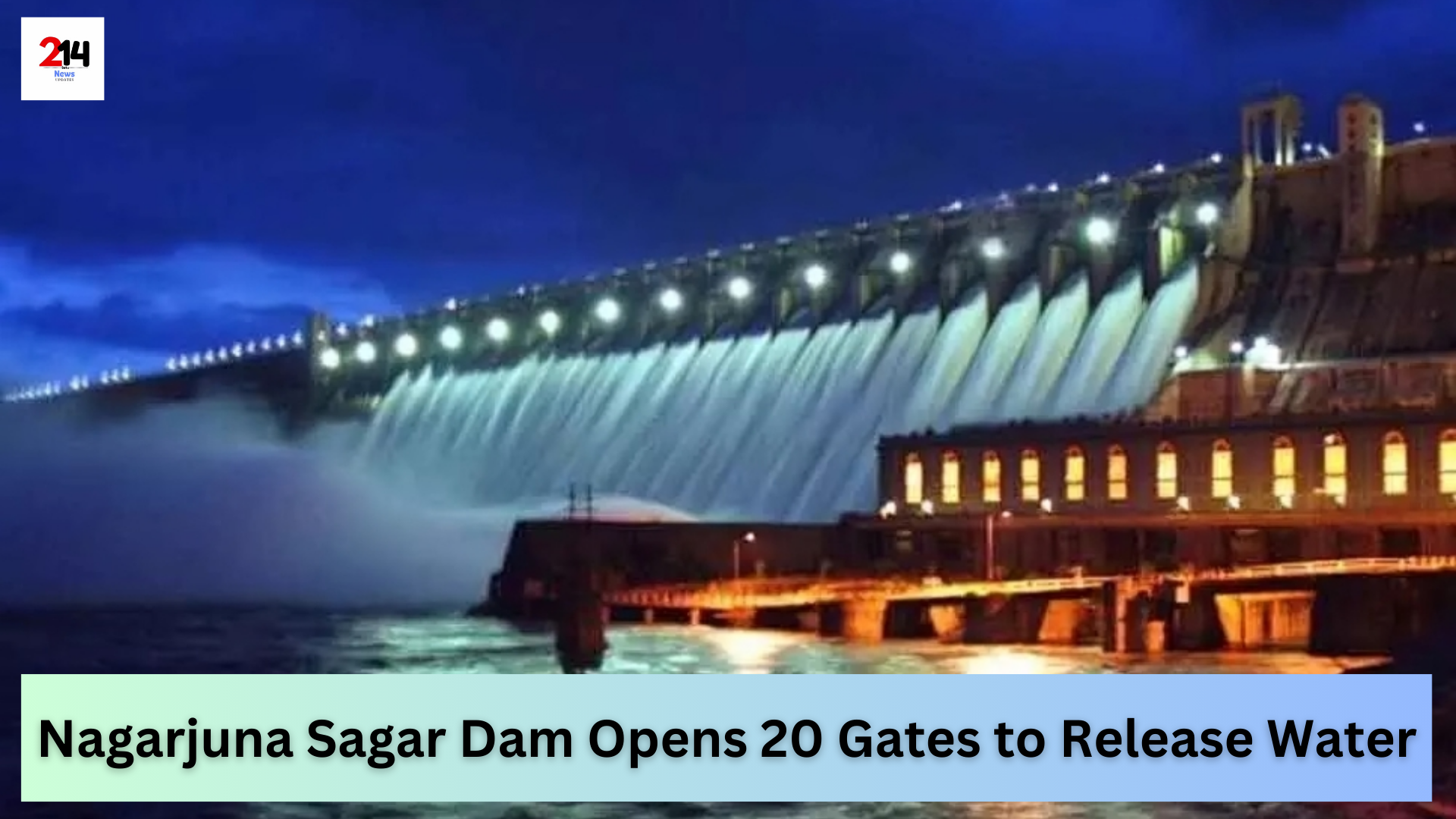
The Nagarjuna Sagar Dam, a major water reservoir in India, recently opened 20 of its 26 gates. This was necessary because of the large amount of water flowing in from the Srisailam reservoir due to heavy rains.
Why the Gates Were Opened
The dam’s authorities decided to open the gates to manage the rising water levels. The inflow of water into the reservoir was around 414,014 cubic feet per second (cusecs). The water level in the dam had reached about 587.50 feet, close to its full capacity of 590 feet. To prevent overflow and ensure safety, the combined outflow through the opened gates was about 422,292 cusecs.
Impact on Local Communities
Residents of downstream villages in the Nalgonda and Palnadu districts were warned in advance. They were advised to stay away from the riverbanks to avoid any danger. The phased opening of the gates helped control the release of water and minimize risks to the local population.
Historical and Technical Background
The Nagarjuna Sagar Dam was built between 1955 and 1967. It is located on the Krishna River, between the states of Telangana and Andhra Pradesh. The dam is 124 meters tall and 1.6 kilometers long. It has 26 flood gates, each 13 meters wide and 14 meters high. The dam’s reservoir can store up to 11.472 billion cubic meters of water.
Role in Irrigation and Power Generation
The dam is essential for irrigation and power generation. It helps irrigate large areas in Telangana and Andhra Pradesh. The right canal (Jawahar Canal) is 203 kilometers long and irrigates 4,520 square kilometers, while the left canal (Lalbahadur Shastri Canal) is 179 kilometers long and irrigates 4,080 square kilometers. The dam also supports a hydroelectric power plant with a capacity of 815.6 megawatts (MW).
Environmental and Cultural Significance
The Nagarjuna Sagar Dam is a popular tourist spot, especially during the monsoon season when the gates are open. Nearby attractions include Nagarjunakonda, Ethipothala Falls, and Buddhavanam. The area is historically significant because of the ancient Buddhist settlement of Nagarjunakonda, which was relocated before the reservoir was filled.
Conclusion
The recent opening of the Nagarjuna Sagar Dam’s gates shows the importance of managing water in large projects. By handling the inflow and outflow efficiently, the dam continues to be a vital resource for irrigation, power generation, and tourism, supporting the development of Telangana and Andhra Pradesh. Efforts to address environmental challenges and optimize the dam’s potential will ensure it remains beneficial for the region.
CM Chandrababu Naidu’s District Visits: Engaging with Citizens and Addressing Local Issues

